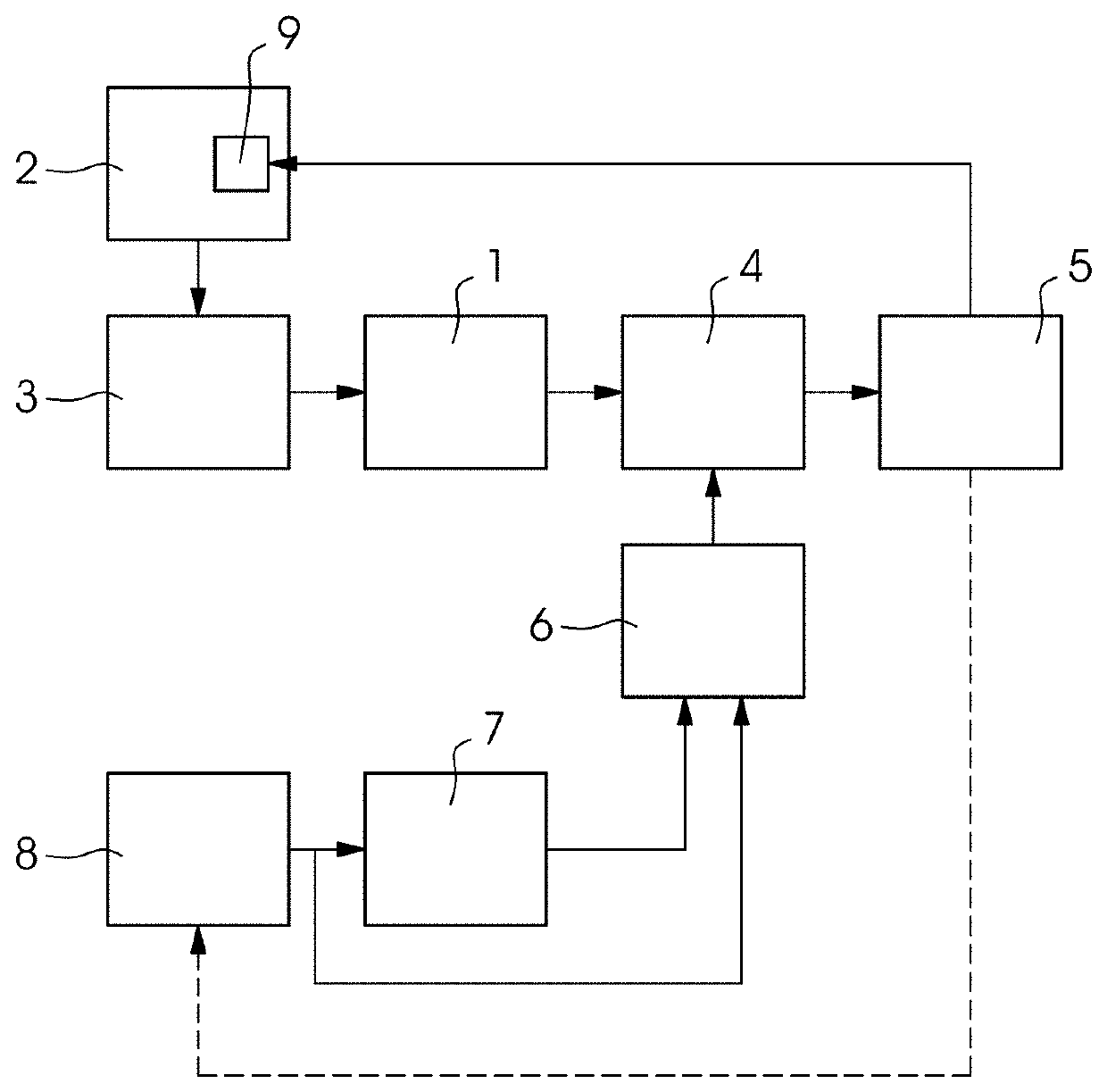Method for improved processing of print jobs using compatible material
a technology of compatible materials and print jobs, applied in the field of improved processing of print jobs using compatible materials, can solve problems such as limiting jobs
- Summary
- Abstract
- Description
- Claims
- Application Information
AI Technical Summary
Benefits of technology
Problems solved by technology
Method used
Image
Examples
Embodiment Construction
[0022]Referring now in detail to the single FIGURE of the drawing, there is seen a simplified system for implementing the method of the invention. For reasons of simplicity, only one print shop 2, one printing machine 9, and one customer 8 are shown. It is to be understood, however, that the system may extend to any number of printing machines 9 in any number of print shops 2 and to any number of customers 8. The FIGURE shows the print shop 2 with the one printing machine 9 having specific technical characteristics. A print shop owner may input the technical characteristics of the print shop using an input device 3 in the print shop 2. In addition, the print shop owner may input the characteristics of the consumables such as the paper or ink that are used. The owner of the print shop 2 may likewise input the cost structure using the input device 3. The input device 3 is preferably a computer connected to the Internet. In addition, the FIGURE illustrates a simulation computer 1 commu...
PUM
 Login to View More
Login to View More Abstract
Description
Claims
Application Information
 Login to View More
Login to View More - R&D
- Intellectual Property
- Life Sciences
- Materials
- Tech Scout
- Unparalleled Data Quality
- Higher Quality Content
- 60% Fewer Hallucinations
Browse by: Latest US Patents, China's latest patents, Technical Efficacy Thesaurus, Application Domain, Technology Topic, Popular Technical Reports.
© 2025 PatSnap. All rights reserved.Legal|Privacy policy|Modern Slavery Act Transparency Statement|Sitemap|About US| Contact US: help@patsnap.com

